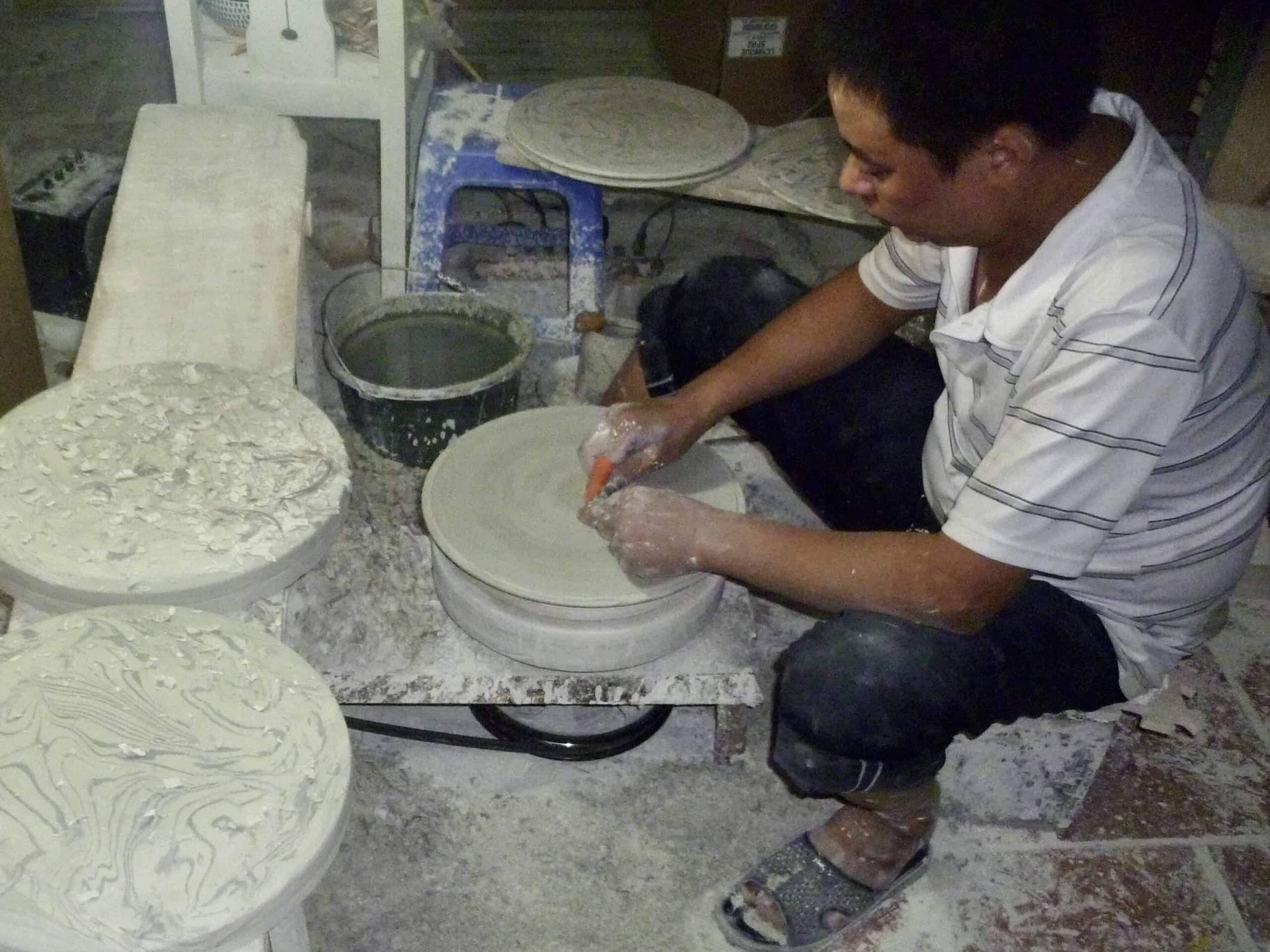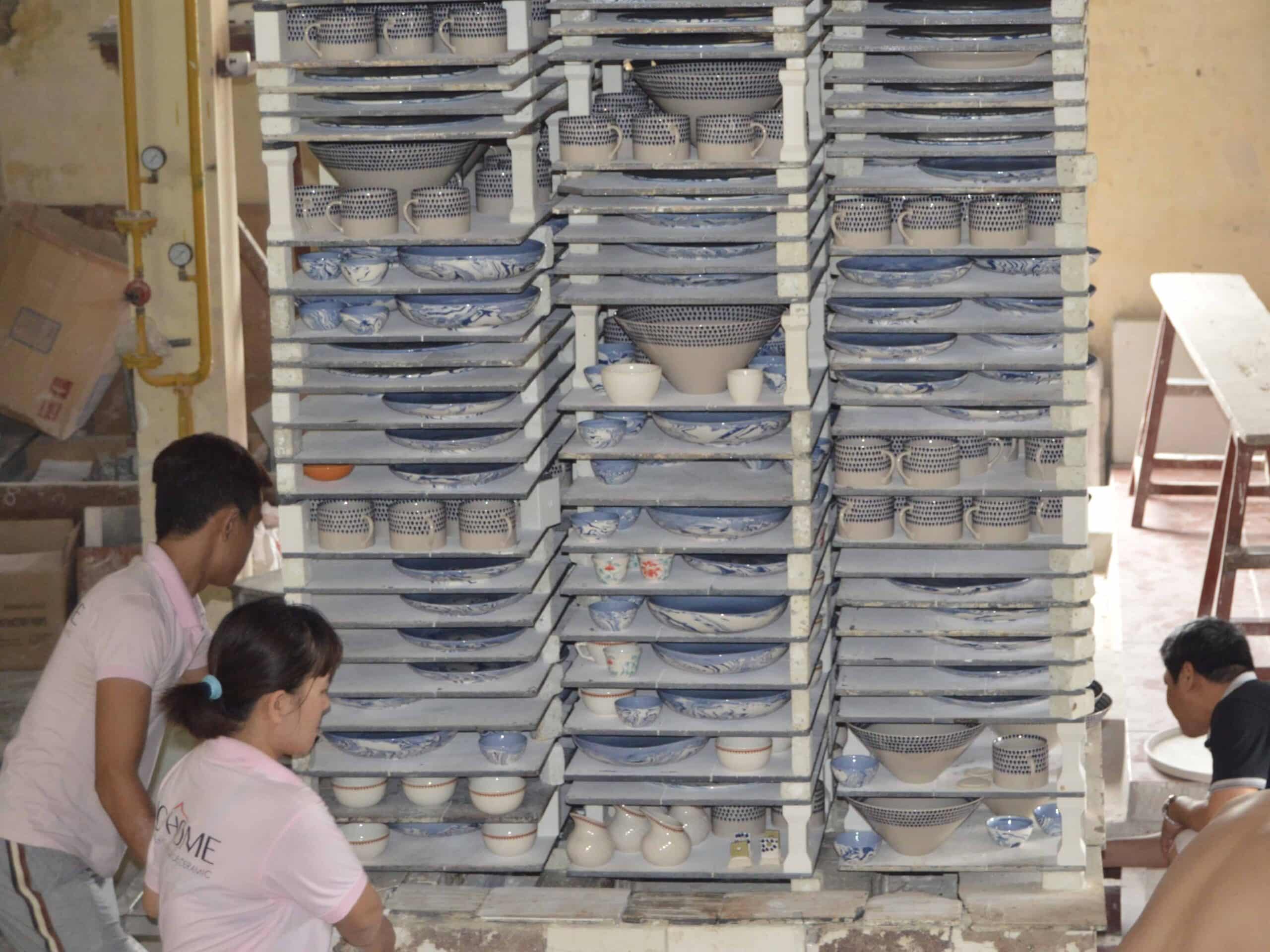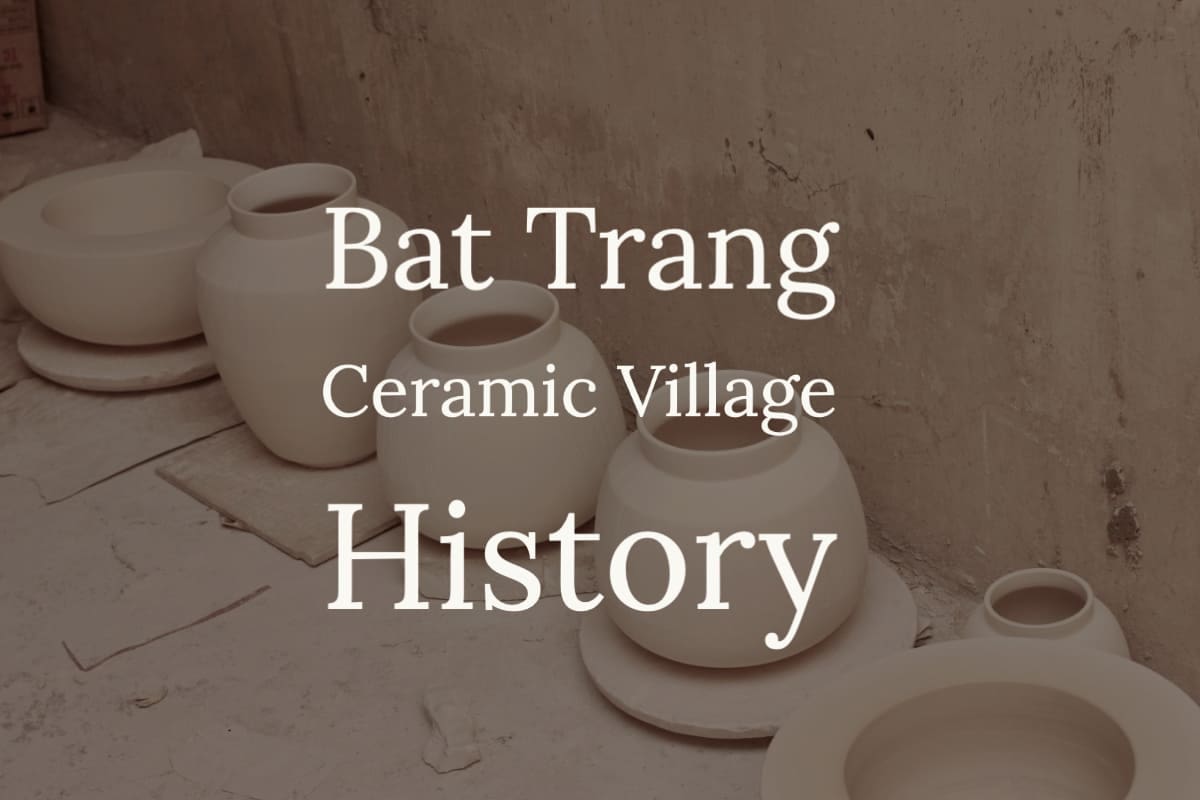If you go to Hanoi, one place to visit is the Bat Trang ceramic village. The Bat Trang ceramic village has manufactured ceramics for many centuries.
The Bat Trang Ceramic Village in Vietnam has consistently produced ceramics for over 1,000 years. Even during the Chinese or French rule of Vietnam, the Bat Trang Ceramic village never stopped its pottery or ceramic manufacturing. During the Vietnam-American war, many American bombs were dropped on the Bat Trang ceramic village, but they still continued to manufacture pottery and ceramic products. Today, the Bat Trang Ceramic village continues to be the primary location for the manufacturing of pottery and ceramics in Vietnam.
Table of Contents
A Brief History of Vietnamese Ceramics
The Bat Trang ceramic village is an area about 16 Kilometers (10 miles) south of Hanoi. This area was designated for Vietnamese ceramic production over a thousand years. In 1010, the Vietnamese King Ly Thai decided to move the capital of Vietnam to Thang Long or present-day Hanoi.
The King’s new northern capital city needed the tradesmen, merchants, and craftsmen to come with him. One group of craftsmen that came were the ceramic or pottery producers.
These ceramic and pottery producers needed to find an area where they could find the materials to produce their ceramic or pottery wares and still reach the new capital city of Thang Long or present-day Hanoi to sell their goods.
They settled on a stretch of land about 13 kilometers or about 10 miles south of Hanoi but on the other side of the Red River from present-day Hanoi.
They picked this spot because the area had a lot of white clay that they could use for their pottery and ceramic production, and it was also located on the Red River, so they had access to the water in the river. The present-day location of the Bat Trang ceramic village is in the exact same spot that the pottery makers chose over 1,000 years ago.

Chinese Rule and Ceramics in Bat Trang, Vietnam
China ruled Vietnam off and on for over 1,000 years. In the 15th and 16th centuries, the Ming Dynasty of China ruled over the Mac Dynasty of Vietnam. During this period, there was an open-door policy for trade that ensured that many of the goods produced in the Bat Trang ceramic village could be sold and traded within the country.
This open-door policy also no doubt helped ensure that some Chinese ceramic craftsmen came down to Vietnam.
These Chinese craftsmen helped influence Vietnamese ceramic production. This is why even today, some pottery styles you see being produced in the Bat Trang ceramic village may have Chinese characteristics and designs, but with a Vietnamese flare.
Western Influences and Ceramics in Bat Trang, Vietnam
In the 16th and 17th Centuries, European ships started to sail around the world looking for wares and products they could trade and sell in Europe. Ceramics and pottery became one of those important commodities.
Hanoi became the center where products, including pottery and ceramics, were traded. One of the great advantages of the Bat Trang ceramic village was the proximity to the Thang Long Citadel and Ta Hien Street in the present-day downtown old quarters of Hanoi. In this area, merchants from all over the world came to purchase Vietnamese pottery.
French Rule and Ceramics in Bat Trang, Vietnam
The French ruled Vietnam for many decades (1858 -1954) at this time. Vietnam was part of the French Indochine.
During the French rule of Vietnam, the capital remained as Hanoi. The Bat Trang ceramic village continued to be Vietnam’s main pottery center.
But like with any new rulers, the French also brought with them some of the looks and designs they wanted to have for their pottery and ceramics. The Bat Trang ceramic village once again showed that it could adapt to life under a new system and ruler.

The War Years And The Bat Trang Ceramic Village.
During the Vietnam-American War (1964 to 1973), American planes dropped over 260 million cluster bombs on North Vietnam and Laos. These American bombs were not dropped in downtown Hanoi but mainly in the surrounding areas outside the center of Hanoi, including the Bat Trang ceramic village.
In speaking to some Vietnamese who lived in Bat Trang during this time, many said they received intelligence of when the American bombs were coming to bomb their village. They would leave the village, wait for the bombs to drop, and then come back and rebuild their homes and ceramic factories again.
Even though so many bombs were being dropped on the Bat Trang ceramic village during the Vietnam-American war, the ceramic town of Bat Trang continued to manufacture pottery and ceramics throughout these war years.
The Bat Trang Ceramic Village Today
Today, the Bat Trang ceramic village continues to be a thriving ceramic manufacturing village, with most households in the town involved in the manufacturing of pottery or ceramics. Many of these households have been producing ceramics for 800 or 600 years without stopping production.
The trade secrets of their production, designs, and processes are passed down from generation to generation. The Bat Trang ceramic village has a lot of skills in ceramic production that other places in the world do not have.
Another interesting cultural phenomenon to understand the Bat Trang ceramic village is that until about 20 years ago, about 90% of all the people in the village would marry someone from the town. This means that many of the factories are somehow related to each other, so they will work and cooperate for orders and know-how.
The Bat Trang Ceramic Villages is one of the cultural villages in Vietnam that continues to manufacture pottery and ceramic products as their ancestors did thousands of years ago. The pottery and ceramics produced in Bat Trang are produced for the local market and export markets.
If you are interested in producing any ceramics or pottery in Vietnam, please do feel free to contact us at Mondoro by clicking here. We would be happy to help you with your creating, developing, and manufacturing needs for pottery and ceramic production.
Find out more about how Mondoro can help you create, develop, and manufacture excellent home decor and home furniture products – including lacquer furniture. Don’t hesitate to contact me, Anita. Check out my email by clicking here, or become a part of our community and join our newsletter by clicking here.
Mondoro gives out a FREE Lookbook to anyone interested. You can receive a copy of our latest Lookbook by clicking here.
Listen to our Podcast called Global Trade Gal. You can find it on all major podcast platforms. Try out listening to one of our podcasts by clicking here.
Subscribe to our Mondoro Company Limited YouTube Channel filled with great videos and information by clicking here.
Related Questions
What Is The Difference Between Earthenware, Stoneware, and Porcelain Materials?
Earthenware, stoneware, and porcelain are all made by various clays and then fired. The kind of clay that is used and the temperature at which they are fired can make a difference as to how soft or hard the actual end product is. Though they can all seem to be similar, they are, in fact, all very different materials and products.
To discover more you can read our blog on Earthenware, Stoneware, and Porcelain Materials by clicking here.
How Does The Firing Temperature Affect Ceramics Production?
If a piece of ceramic is not fired at the correct temperature, it will make a huge difference in the outcome of the final product. It is also crucial that the correct kiln is used for the production process. This is because many things must be considered when using a kiln to fire ceramics. During the firing process, there are many things that can cause the production to fail or crack.
To find out more, you can read our blog, How Does The Firing Temperature Affect Ceramics Production? by clicking here.

